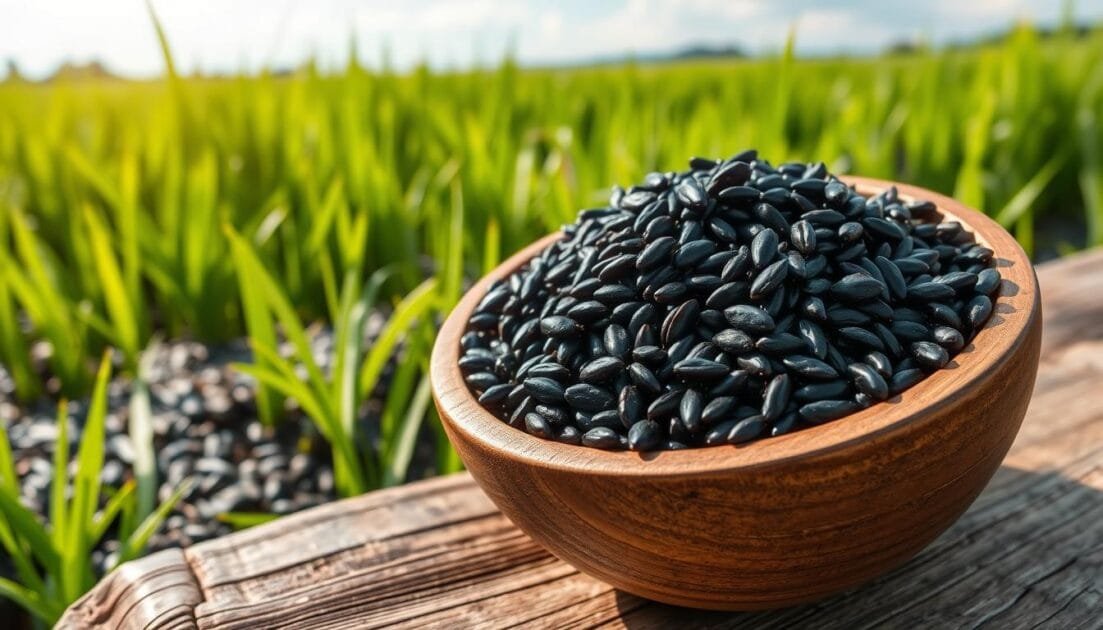Introduction
Kalanamak chawal, also known as kalanamak rice, is one of India’s most treasured aromatic rice varieties. With its distinct fragrance and unique taste, kalanamak rice has earned a special place in the hearts of rice lovers. Originating from the fertile regions of Uttar Pradesh, this ancient grain holds not only culinary significance but also cultural and historical importance. In this blog, we will explore everything about kalanamak chawal, from its origins and benefits to cooking methods and recipes.
History and Origin of Kalanamak Rice
Kalanamak rice, often referred to as the ‘black pearl of rice,’ has a legacy that dates back thousands of years. According to folklore, Gautam Buddha blessed this variety, and it has been cultivated in the Terai region of Uttar Pradesh ever since. Historical records mention kalanamak rice as a prized grain served to royalty and used in religious offerings. Despite facing challenges over the years, dedicated farmers have preserved this heritage grain, making it a symbol of pride for India.
Unique Features of Kalanamak Chawal
- Aroma: Kalanamak rice is known for its strong, earthy fragrance, which becomes more prominent when cooked.
- Taste: It has a unique nutty flavor with a slightly chewy texture.
- Appearance: The grains are short, blackish, and slightly sticky when cooked.
- Nutritional Value: Rich in antioxidants, fiber, and essential nutrients.
Health Benefits of Kalanamak Rice
- Rich in Antioxidants: Helps fight free radicals and boost immunity.
- Good for Digestion: High fiber content promotes healthy digestion.
- Supports Heart Health: Low glycemic index helps maintain healthy blood sugar levels.
- Promotes Weight Loss: Keeps you full for longer due to its high fiber content.
How to Cook Kalanamak Chawal
- Traditional Method: Soak the rice for 30 minutes, then cook with water in a 1:2 ratio. Simmer until tender.
- Pressure Cooker: Cook for 2 whistles with the same water ratio.
- Rice Cooker: Ideal for consistent results; use the same water ratio.
Delicious Recipes with Kalanamak Rice
- Kalanamak Pulao: Cooked with spices, vegetables, and ghee for a rich flavor.
- Kalanamak Kheer: Creamy rice pudding with cardamom and nuts.
- Kalanamak Biryani: A flavorful biryani with marinated vegetables or meat.
Why Choose Kalanamak Rice?
- Organic and Natural: Mostly grown using traditional farming methods.
- Sustainable: Supports local farmers and eco-friendly farming practices.
- Unique Flavor: Provides a distinct taste compared to regular rice.
Where to Buy Kalanamak Rice in India
You can find authentic kalanamak rice in local grocery stores, organic food shops, or online marketplaces specializing in regional grains.

Conclusion
Kalanamak chawal is more than just rice; it is a symbol of India’s rich agricultural heritage. With its delightful aroma, health benefits, and culinary versatility, it deserves a place in every Indian kitchen. By choosing kalanamak rice, you not only enjoy its unique taste but also support the farmers who keep this tradition alive. So, next time you cook rice, make it special with kalanamak chawal!

